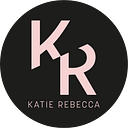Technical Workshops
John McWade’s LinkedIn Learning workshop was helpful in getting an understanding of the basics of a magazine, knowing it’s purpose. Magazines are type and images positioned on a grid. They create an experience for the reader and take them on a journey.
Examples shown at the beginning of the workshop include two different food magazines, Christopher Kimball’s Milk Street and Saveur, both of which have different approaches to layout. Milk Street is an almost square shape with a lot of detailing. The three column design is busy with minimal white space and rectangular photographs. The choice and consistency of typefaces gives an elegant and established feel ot the magazine. Saveur is the opposite. It is packed with photographs and a variety of typefaces in multiple colours. This magazine is random but the typefaces and photograph combinations work, giving a playful feel.
McWade discusses that the cover is the style tone setter for the magazine, it gives the first impression. When appearing on a newstand the masthead will appear in the top third of the page, however this rule does not need to be followed if it is not to appear in this setting.
Magazines can be divided into different sections. As a whole it can be divided into the front, middle and back; the front being the front cover, middle being the contents and the back being the back cover. The content can then be divided into quick look, light reading and deep reading. Quick look is capturing the readers attention, light reading is any intros or pull quotes and deep reading is the body copy where the reader is fully engaged.
Text within a magazine is generally spread nicely amongst the page, allowing for easy reading. However, McWade explained that bold capital lettering can be used to demand attention from the reader. This technique can be used not so that the text is unreadable but requires the reader to really be engaged and take their time to understand what is being said.
This was my first time using a LinkedIn Learning workshop and I found it extremely helpful. The short videos are easy to engage with and aren’t at all tedious. The bursts of information were insightful and educational, allowing me to take quick notes and further expand my knowledge on the basics of magazine design.
https://www.linkedin.com/learning/magazine-design-getting-started/welcome?u=42288921
In David Blatner’s LinkedIn Learning workshop, InDesign is described as a layout app that has to ability to import Illustrator, Photoshop and even Microsoft Word documents. The workshop covers initial launching of the software where boxes about missing links and missing fonts can appear and how these issues can be resolved. Although I already know a lot of the information, I feel it is always important to refresh this knowledge and potentially learn new shortcuts; I find it interesting to see how other people use the software.
When setting up a document you can choose a preset for print, web or mobile or you can make your own. At this stage you can adjust the units of any measurements as well as whether you want facing pages, margins or gutters. Blatner suggested that you follow a free template (InDesignSecrets.com) as starting with an empty document can be overwhelming, especially if you are unsure of how to use the software.
To begin with I only watched Learning InDesign in 30 Minutes to give myself a quick reminder of how to use InDesign efficiently and effectively. The workshop also covers creating a document, managing pages, text, graphics, colour, frames and paths, managing objects, text formatting, styles, tables, interactive documents and packaging, printing and exporting in further detail but these shall be things that I can go back to in the future for further guidance.
https://www.linkedin.com/learning/indesign-2020-essential-training/new-documents?u=42288921
A technical training workshop with Koray Pezukoglu covered the basics of InDesign (much like Blatner’s on LinkedIn Learning). However, Koray’s was more helpful in terms of setting up the document like a magazine as he knew that the brief was based on editorial design.
Areas covered: creating/setting up the document, organising the grid, placing text, creating shapes and inserting images into them, toggling through images waiting to be placed in the document, using smart guides, using paragraph styles.
One useful tip that I used a lot following this workshop was when placing multiple images into the document, pressing the up and down arrows will shift between the images waiting to be placed. Prior to this I would place all images into the document, not necessarily in the correct places, and I would then organise them to where I want them.
